There’s a painting by Frederic Remington – an artist known for his impressions of the Old West – of a herd of bison being led by a bull. “That never woulda happened,” says retired biologist and wildlife guide Pat Rousseau. “The females make all the decisions – where you eat, where you lay down, who babysits.”
Youngsters jostle, a mother tends to her calf, a male rubs his head roughly against a rock.
Pat is leading chapter one of my summer mission through the province of Manitoba to see the ‘big five’ – a term famously coined by big-game hunters in Africa, now used to market wildlife experiences across the globe – and we’ve just got our first tick. Metres from the minibus are 20 members of the 40-strong plains bison herd that resides at Riding Mountain National Park – all shaggy coats, humped shoulders and low-slung heads. Youngsters jostle in preparation for the autumn rut; a mother tends to her calf; a male rubs its head roughly against a rock. It’s a microcosm of bison life as it existed on the plains generations ago, when the population sat so comfortably in its tens of millions that people would shoot them from passing trains, just for fun.
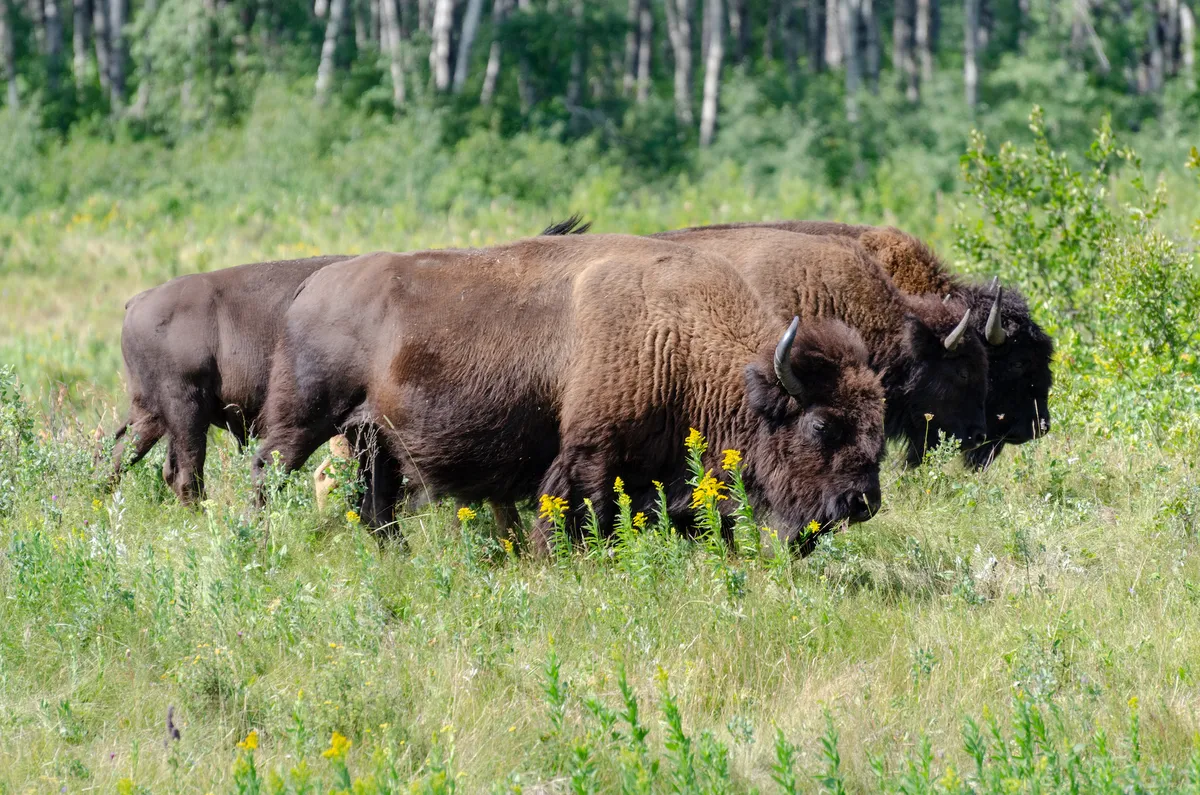
That the bison are in a drive-through enclosure may lend the experience a safari-park feel, but the lack of a chase doesn’t make this an insignificant sighting. These are the descendants of a small herd reintroduced here in 1940, part of a conservation effort that began at the turn of the century, following decades of intense hunting that had sent numbers nosediving to a few hundred. And it’s been something of a success – today, the country’s wild population has recovered to more than 2,000. The Lake Audy herd roams freely within 500ha of grassland divided into winter and summer pasture, a rotation that ensures ample forage all year; the fence – complete with holes to allow passage to other wildlife – is to protect neighbouring farmland.
Captive they may be, but the park needs these animals. Bison play a key role in the natural processes of Canada’s rough fescue grasslands, an ailing habitat that has dwindled to 5 per cent of its former range, and so too is under restoration here. By wallowing, these hefty mammals open up the earth for seedlings; by targeting grasses, they allow wildflowers to thrive.
As a national park, Riding Mountain enjoys something of a low profile compared to the bucket-list honeypots of Banff and Jasper, further west in the Rockies. Leaving the bison behind, I pore over the map, taking in a plethora of delicious names that read like something straight out of the Old West – Grey Owl’s Cabin, Reeves Ravine, Rolling River Road. Shaped like a handgun, the park sits atop the Manitoba escarpment and comprises a 3,000km mosaic of grasslands, aspen parkland and boreal forest – an island wildlife refuge amid the perfect geometry of crops below.
While the bison command the grasslands, the cool damp of the park’s boreal forest – a land of lichens and shrubby trees, carved up by tightly winding creeks – is the realm of the moose. This, the ultimate symbol of Canada’s great outdoors, is next on the list.
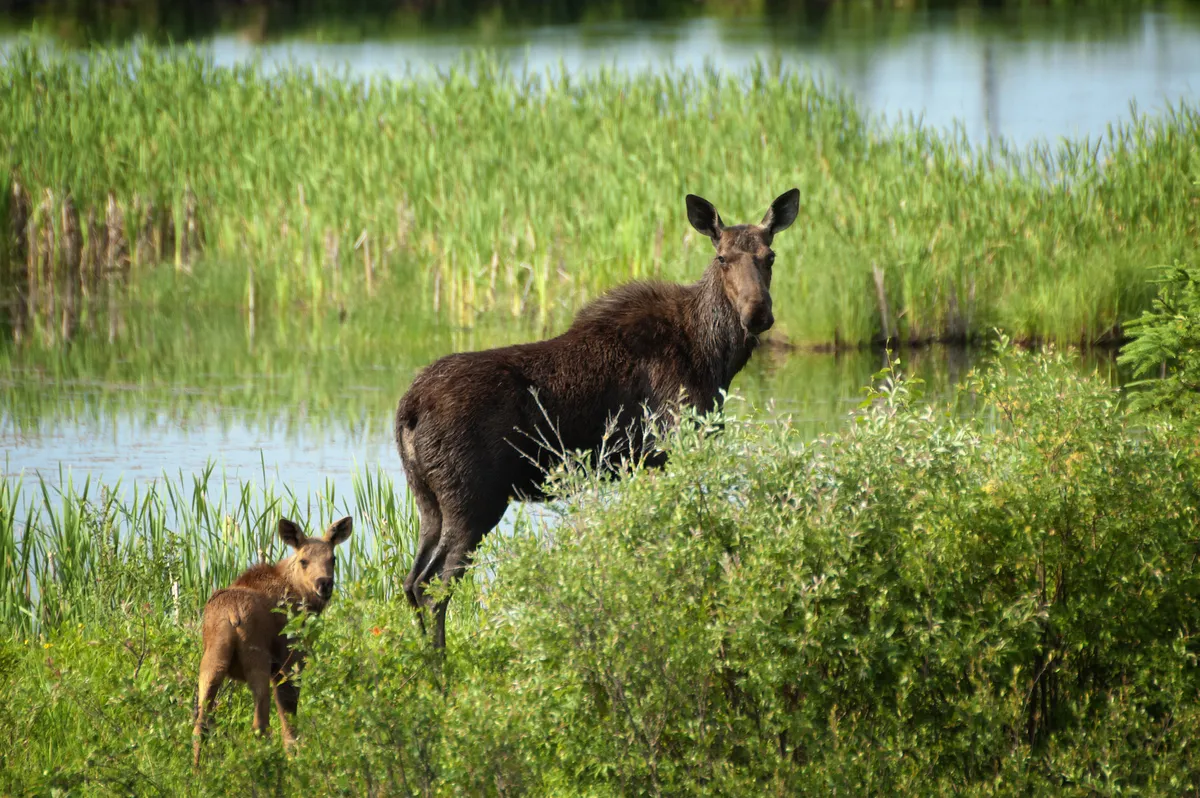
My encounter with the world’s largest member of the deer family is all too brief. I’d been anticipating something showier – a magnificent beast parading its 1.5m antlers with great pomp and furore, perhaps bugling into the misty trees from atop a grassy tussock. Instead, one yearling female takes one for the team, her long ears twitching as she glances upwards from a drink in a roadside pond, as dusk darkens the trees. For big beasts, it seems moose are pretty good at hiding.
One more to go before I head north, and it shouldn’t be too tricky. I’m after the black bear, and given that Riding Mountain’s aspen woods are one of the best places in Canada to see it, I’m optimistic when Pat throws the bus into gear at 7am the next morning. “Wildlife here is wild,” he says, as we turn off Highway 10, the main artery through the park, and onto a quieter track, a squadron of dragonflies flying in tandem. “The bears are not used to humans. They behave as they always have, adapted to their natural environment.”
Here, it’s the understory of hazel, raspberry and saskatoon, a productive larder that delivers the inconceivable 30,000 berries the bears must eat daily to prepare for hibernation. I’m still attempting to calculate how many supermarket punnets this equates to when the bus skids to a halt, and I’m shown a slender saskatoon branch yanked down to almost horizontal. Bears, apparently, are partial to a lie-down as they feed.
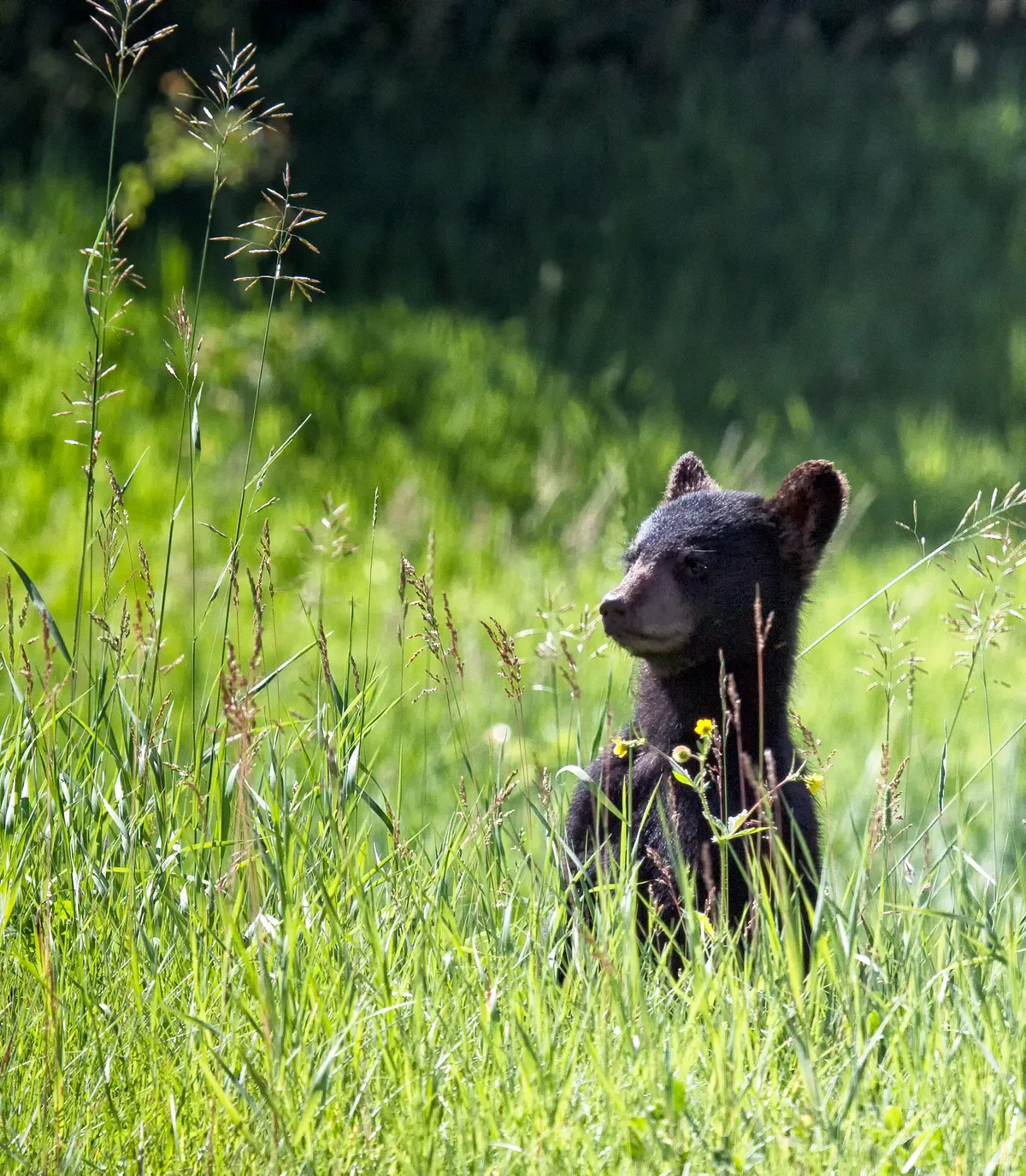
Our luck is out that morning – perhaps because it’s hot, Pat suggests, and the bears may be foraging more at night. We try again in the evening, the bus moving at such speed that I’m doubtful we’ll see much at all, but I’m proved wrong – a rotund black blob comes into view by the roadside, tearing at the bushes. Later, as the light fades, we spot a youngster gambolling along a grassy bank and a large male standing tall on his hind legs, unfazed by the passing vehicles as he eats his fill of fruit. Three days, three habitats, three ticks. Time to go north.
The first pod appears, looming a ghostly green before surfacing.
After the greenery and warmth of Riding Mountain, Churchill, hugging the western shore of Hudson Bay in Manitoba’s far north, is utterly grey and bleak. No neat pavements line the streets, no pretty gardens break up the desolate buildings. Languishing snowmobiles and rusting shovels point to the bone-rattling winters that engulf this remote settlement, a town where no roads lead. Yet there are two very good reasons why tourists flock here from across the globe. First, the estuarine waters of the Churchill River are the summer breeding ground for 3,000 beluga whales. And second, it’s the self-proclaimed polar bear capital of the world.
For the less adventurous or the naviphobic, the good news is you can spy the world’s whitest, noisiest whale from the terra firma of Port Churchill. Shivering in the icy wind as I wait to board a boat, I peer past the harbour wall to the flat expanse of water beyond. Sure enough, a pale dot breaks the grey. And another... and another. There must be at least 20 of them, backs arching smoothly like tiny cresting waves.
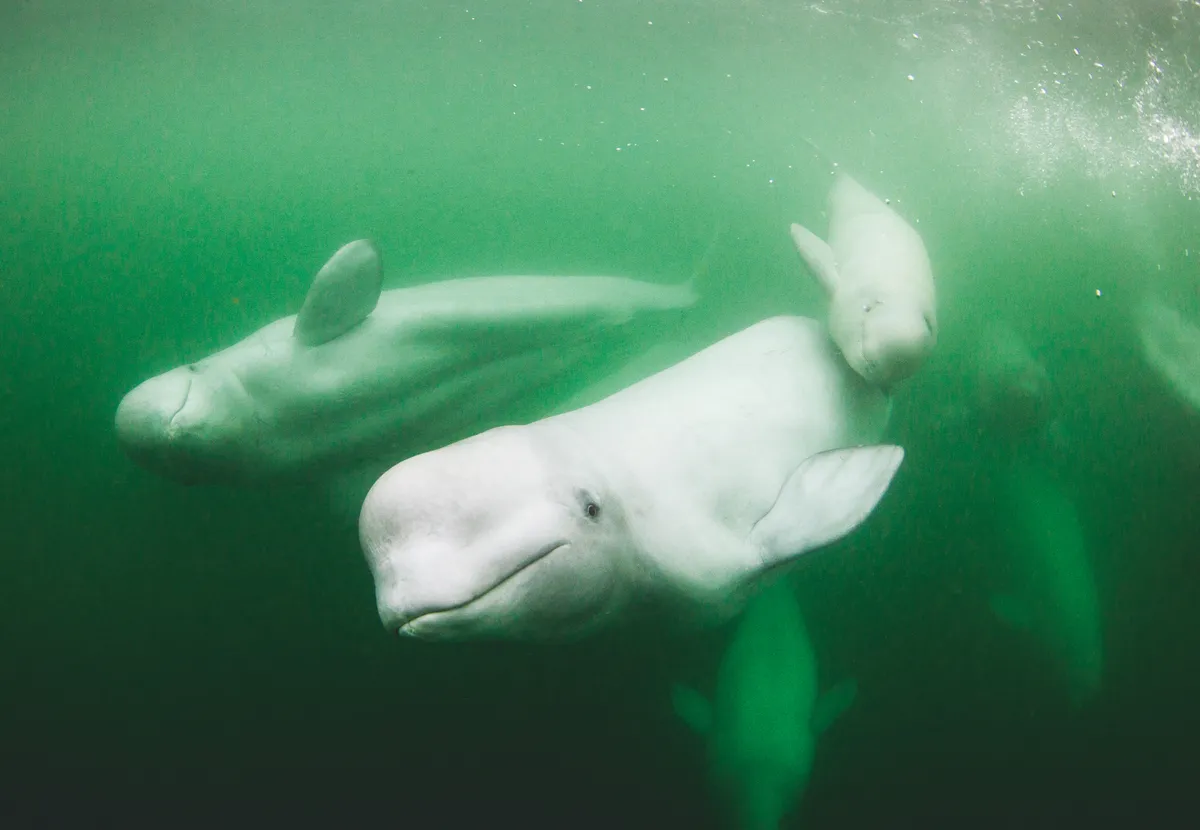
Belugas breed in Hudson Bay in spring, migrating to the warmer coastal waters in June to dine on capelin and give birth (to young conceived the previous year). They are inquisitive creatures, and their habit of investigating passing vessels means an apparently easy life for beluga tour guides. Indeed, we’ve been offshore for less than 10 minutes when the first pod appears, looming a ghostly green before surfacing with a small blow, a flash of distinctive, melon-like head and a cursory flip of the tail. The captain cuts the engine and we bob quietly on the water, enjoying the aquabatics as the sun finally lightens the gloom. I count at least 16 individuals streaking around and beneath us, including a tiny brown calf flanked by its mother.
The serenity is shattered when the hydrophone goes down to eavesdrop on the cetacean conversation. Belugas were famously nicknamed the ‘canaries of the sea’ by whalers of old, but the teeth-jangling cacophony of unearthly shrieks assaulting my ears is about as far from a chirpy passerine twitter as it gets. The vocalisations, explains the captain, shouting to be heard above the din, are made through nasal sacs in the blowhole, and are critical to survival in these murky northern waters, when thick ceilings of sea-ice block out the light.
Every pale rock looks like a bear. Then, one of the rocks lifts its head.
Four out of five – two days to go. All attention is now firmly focussed on the biggest of both the ‘big five’ and of any land carnivore on Earth: the polar bear. Peak season, when hundreds of bears assemble along Hudson Bay’s snow-clad shingle, waiting for the sea-ice to thicken and seal-hunting season to begin – a journey that often brings them into the town itself – is still three months away. In July, marooned on land, they’re lying low and saving energy.
Polar Bear Alley, 10km out of town, is our first port of call. As its name suggests, this desolately beautiful stretch of grass-fringed beach is a known hotspot. We are escorted here by guide Paul Ratson, stopping en route at his secluded home for a quick tutorial on how to bear-proof your property. Beds of nails line the windowsills, a large floodlight commands the veranda and a sturdy metal cage obscures the front door – the “perfect place to watch a polar bear rip a $700-seat from your snowmobile,” he says. I joke about the lengths people will go to avoid the neighbours, but co-existing with polar bears isn’t a laughing matter. Paul recalls how, a few years back, a starving male besieged him and his wife for four days. “I had to call the authorities on it,” he recalls. “If I’d have left the house, he’d have chased me, and I’d have had to shoot him.”
We file quietly down onto the sand, flushing a legion of angry horseflies – known as bulldogs – into the air, and huddle for safety. Paul points out the faint but perfect imprint of a paw, the lightness of touch, he explains, indicative of a polar bear’s ability to distribute its weight. As he talks, all eyes are scanning the surroundings. “There could be a bear hiding right there,” he says, gesturing to the boulders on the upper shore and repositioning his rifle. But no creamy, black-eyed head pops up, no furry body shuffles into view.
The quest continues as we rumble out onto the vast, treeless expanse of the Churchill Wildlife Management Area in a Tundra Buggy, a tank of a bus with tyres as tall as me. It’s a dazzling blue-sky day, and the landscape, pockmarked with mirror-calm pools, shimmers under swathes of lurid pink fireweed, bright yellow marshwort and vivid green mosses. Geese and tundra swans taking to the wing are the only movement. Every pale rock looks like a bear.
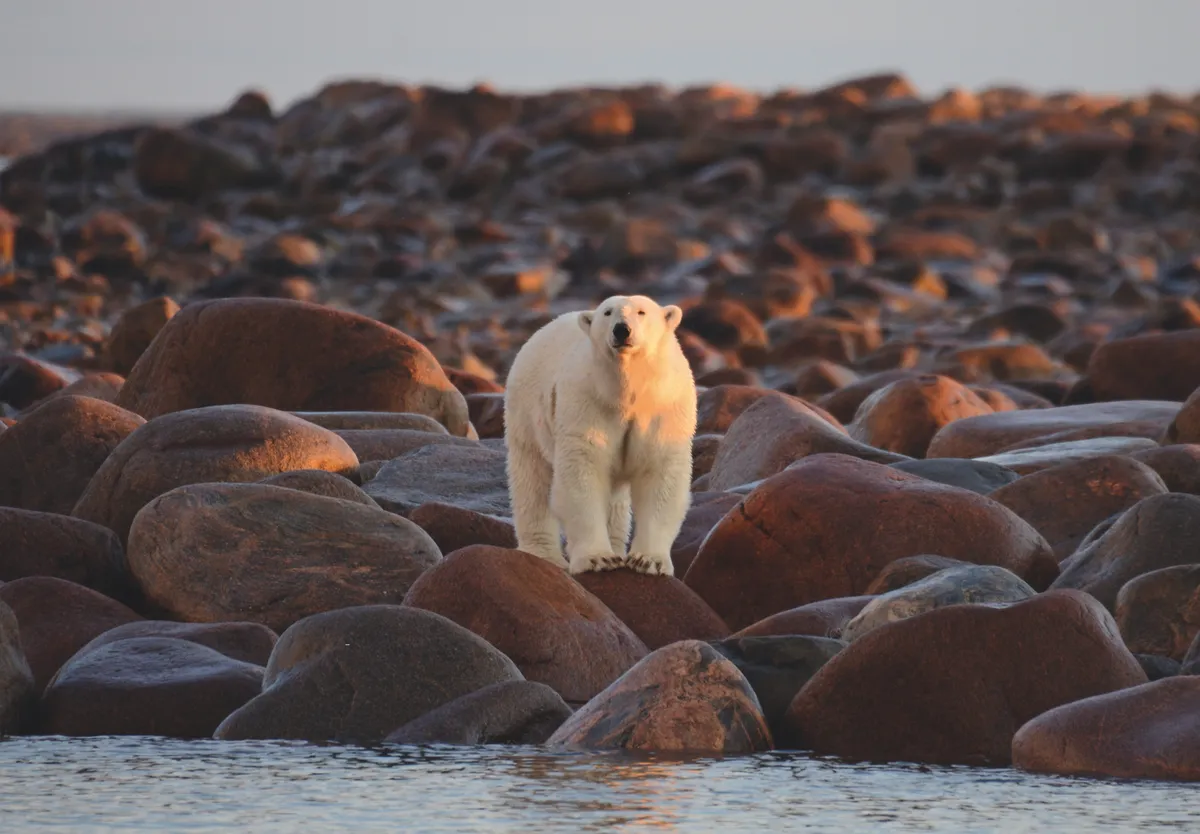
Then, 100m away, one of the rocks lifts its head. Standing among the fireweed, it gives us the side-eye, then ambles into the pink haze. “Bears have such sensitive noses – they can detect prey from a kilometre away,” says Neil Mumby, our driver, as a volley of camera shutters ricochets around the cabin.
This bear is a male, we think. He has a bit of sag to his belly, a 3.5/5 on the Polar Bear Body Condition Index, so he’s coping well with the fast. Condition can be governed by the extent of ice during the previous year – if it forms early and melts late, it allows a valuable few extra weeks of hunting time, and puts the females in better breeding condition. Thus, though the Hudson Bay population is in overall decline, the bears here can still have good years.
Amid the otherwise disheartening prognosis for this icon of climate change – something I know I am part of, merely by being here – it’s a pearl of good news. We spot three more bears before the day is out, all in good condition, resting in the distance. The ‘big five’ are in the bag, but we are quietly contemplative that this, the star of the show, has the least certain future.
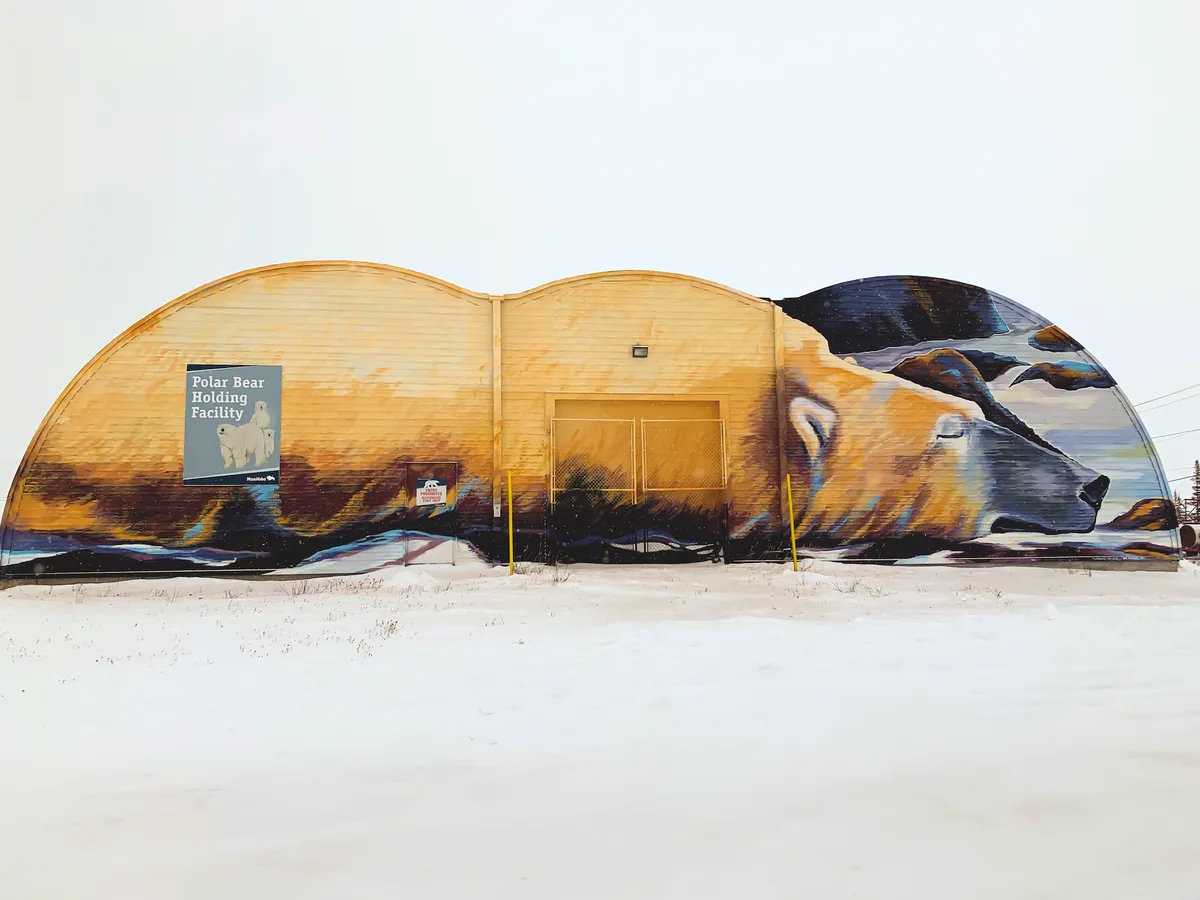
LIVING WITH POLAR BEARS
For six weeks in October and November, Churchill’s 900 human inhabitants co-exist with one of the largest predators on Earth – and are showing the world how it’s done.
For the residents of Churchill, having polar bears as close neighbours is just a fact of life. Yet the town takes no chances and, as a result, there have been no fatal attacks here for nearly 40 years. Warning signs glare from every corner; a nightly siren wails on the stroke of 10pm to chivvy you home. Doors are left unlocked should someone need a quick getaway, and children make the short journey to school in cars and buses. On Halloween, trick-or-treating is only possible because the authorities form a virtual human chain around Churchill’s streets.
If a bear wanders into the town or its surrounds, the Polar Bear Alert Program (PBA) responds immediately. Bears are warded off by ‘hazing’ – yelling, revving engines and use of ‘bear bangers’, and if these fail, by firing rubber bullets. Next step will be to bait a trap, and the last resort is a tranquilliser gun.
Tranquilised and trapped individuals are relocated to the world-famous Polar Bear Holding Facility, known as ‘polar bear jail’ – a former aircraft hangar outside the town. Inmates spend 30 days here, watered but not fed, before being airlifted 70km up the coast. Most will then continue north, moving onto the sea-ice as it thickens.
Prior to the formation of the PBA in 1980 and the opening of the jail two years later, a three-strike system – “green, yellow, red, dead” – was used to control persistent offenders, with an average of 15 ‘problem’ bears euthanised each year. “Jail is not the ultimate solution, but it’s the best we can do,” says guide Paul Ratson. “We’ve become very good at not killing bears here.”
Sarah McPherson travelled with Frontiers North Adventures.
Main pic: In summer, when fireweed carpets the tundra in Manitoba’s far north, polar bears can do little but rest. With only opportunistic meals to sustain them, they must rely on their fat reserves until autumn, when the sea-ice forms and seal-hunting season can start anew. © Dennis Fast/VWPICS/Getty
